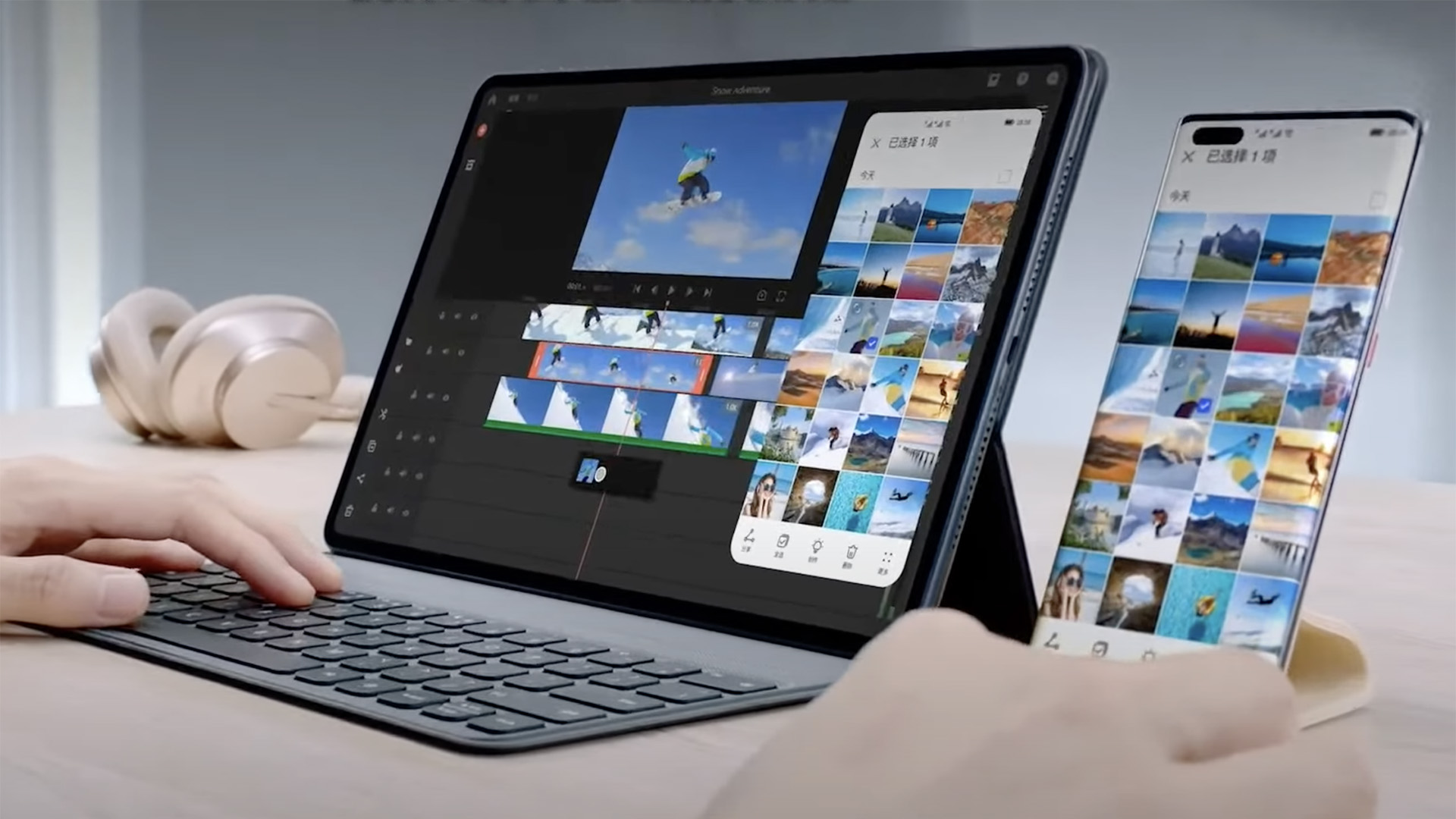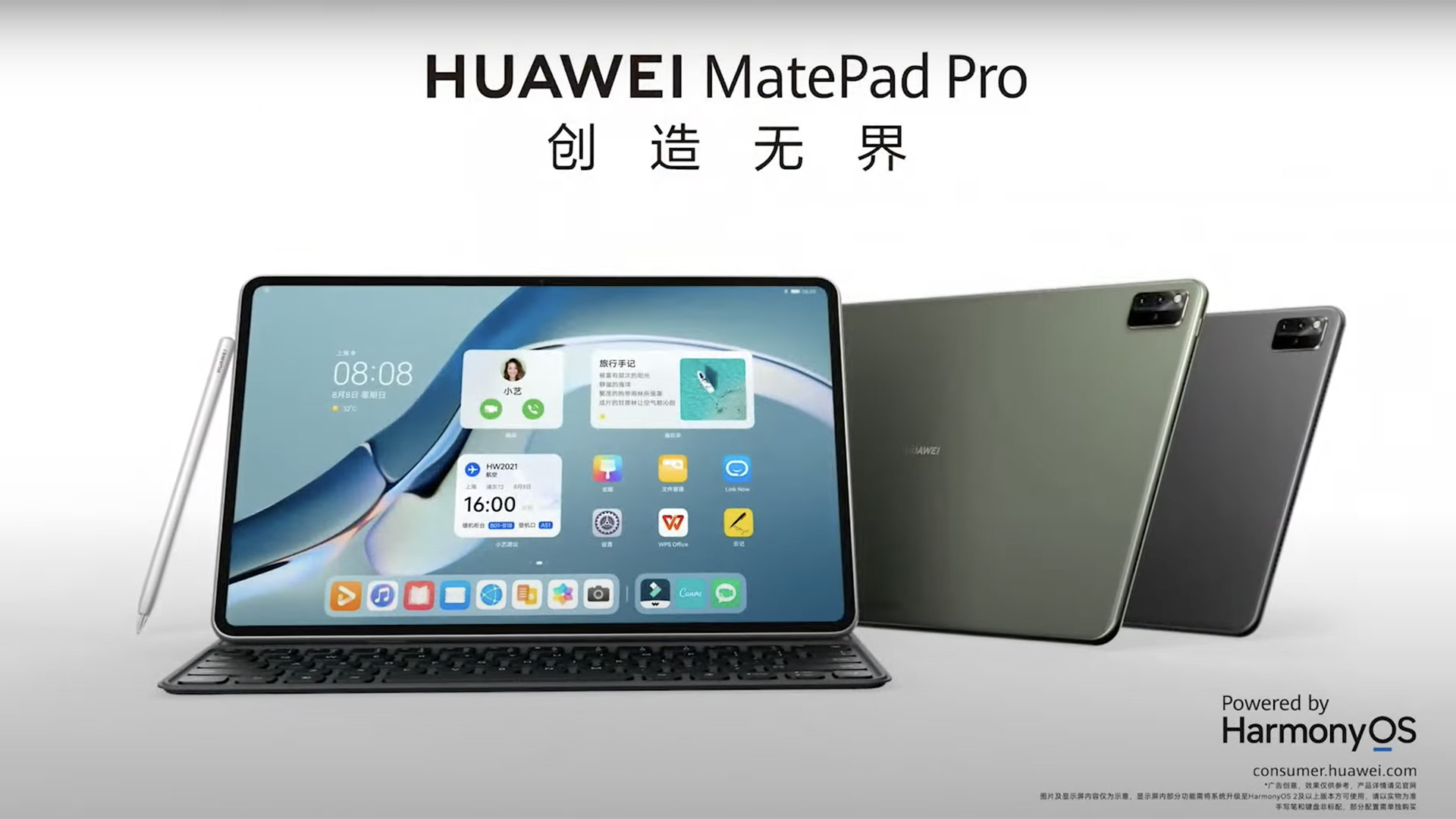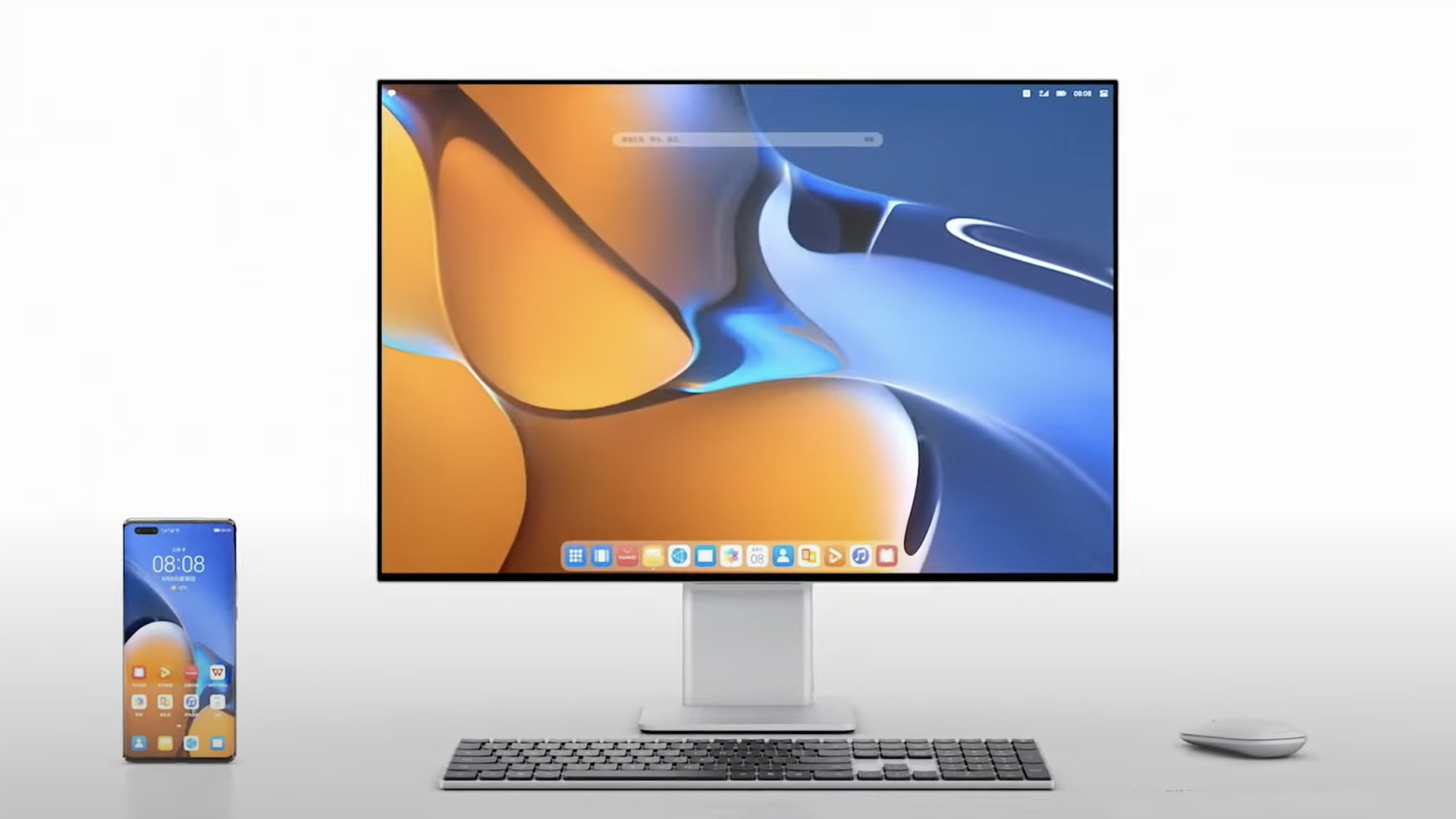Huawei MatePad Pro 12.6-inch is the first Harmony OS tablet, and you can use it like a PC
The new version of the Huawei MatePad Pro is as close to a PC experience as you can get on a tablet


The Huawei MatePad Pro 12.6-inch is the first tablet to be powered by the new Harmony OS and it is certainly sizing up to compete for the high-end tablet market. With a 12.6-inch OLED display, it’s slightly smaller than the iPad Pro 12.9-inch and lacks the mini-LED display but it does have some interesting features for those looking to use it more creatively.
This model now has a full-size keyboard that attaches magnetically to the tablet, with Bluetooth connectivity and wireless charging. It also allows the use of a Bluetooth mouse with the tablet. You can perform both left and right clicks, and even use the scroll wheel.
The Harmony OS home screen has a dynamic layout, allowing you to customize the widgets. There is an update to the MatePad Pro app multiplier that allows a split-screen display to run two apps at once and both a voice control and handwriting function to input text into any box using voice recognition or handwriting using the M-Pencil.
- Amazon Prime Day 2021 date plus the best deals to expect
- Huawei launches Harmony OS: an operating system to run on any device
- Alienware X15 and X17: full details on Dell’s new range of gaming laptops

Making use of the Harmony OS, you can easily drag and drop files between the tablet and both smartphones and PCs. You can also mirror a PC screen onto the tablet to use the M-Pencil for any PC application. Alternatively, it can be used a second screen.
The MatePad Pro features eight speakers and four microphones, including three linear mics for noise reduction on calls. There are three cameras on the rear – a 13MP primary camera, a winde-angle and a 3D sensing camera. Thanks to a huge 10,050mAh battery it has a battery life of 14 hours and uses Wi-Fi 6+ for connectivity.
The MatePad Pro 12.6-inch comes in three colors (silver frost, matte gray and olive green) and is available from June 10, with a pre-order in China now, priced from 4999RMB (£553/$783/AU$1011). Price and availability in Europe, US and Australia is yet to be confirmed.
M-Pencil (2nd Gen)
To accompany the new MatePad Pro, Huawei announced a next-generation M-Pencil. The new model has an updated look and features, with a transparent nib design that not only looks more pen-like but also allows you to more accurately place the nib on the tablet. You can now double tap on the body of the M-Pencil to perform tasks, such as swapping between the brush and eraser tool in notepad. The Pencil Engine Suite provides a range of additional functions, including the ability to create straight lines for charts and shapes with a rough sketch.
Get all the latest news, reviews, deals and buying guides on gorgeous tech, home and active products from the T3 experts
The M-Pencil (2nd Gen) is available from June 10 and to pre-order now in China, priced 599RMB (£66/$94/AU$121). Price and availability in Europe, US and Australia is yet to be confirmed.
More MatePad models
The 10.8-inch MatePad Pro has also been given a upgrade with a new Qualcomm Snapdragon 870 processor and Harmony OS. It will also be compatible with the second gen M-Pencil and priced from 3799rmb (£420/$595/AU$768).
A new MatePad 11 model will use the Snapdragon 865 processor. It will also be powered by Harmony OS and compatible with the new full-size keyboard and second-gen M-Pencil.

MateView monitors
In addition to the new tablets, Huawei announced two new Harmony OS desktop monitors. The MateView monitor is a 28.2-inch wireless monitor with a 4K display. It features in-built stereo speakers, a smart bar touch control along the bottom of the screen and can connect to a smart phone to work as an external display by tapping the phone on the base of the monitor. For regular laptop and desktop connections it also has a USB-C input.
The MateView GT is a 34-inch curved display with a 165Hz refresh rate, making it ideal for gamers. There is a soundbar built into the base, with an ambient light that can be synced to your game or music.

As T3's Editor-in-Chief, Mat Gallagher has his finger on the pulse for the latest advances in technology. He has written about technology since 2003 and after stints in Beijing, Hong Kong and Chicago is now based in the UK. He’s a true lover of gadgets, but especially anything that involves cameras, Apple, electric cars, musical instruments or travel.